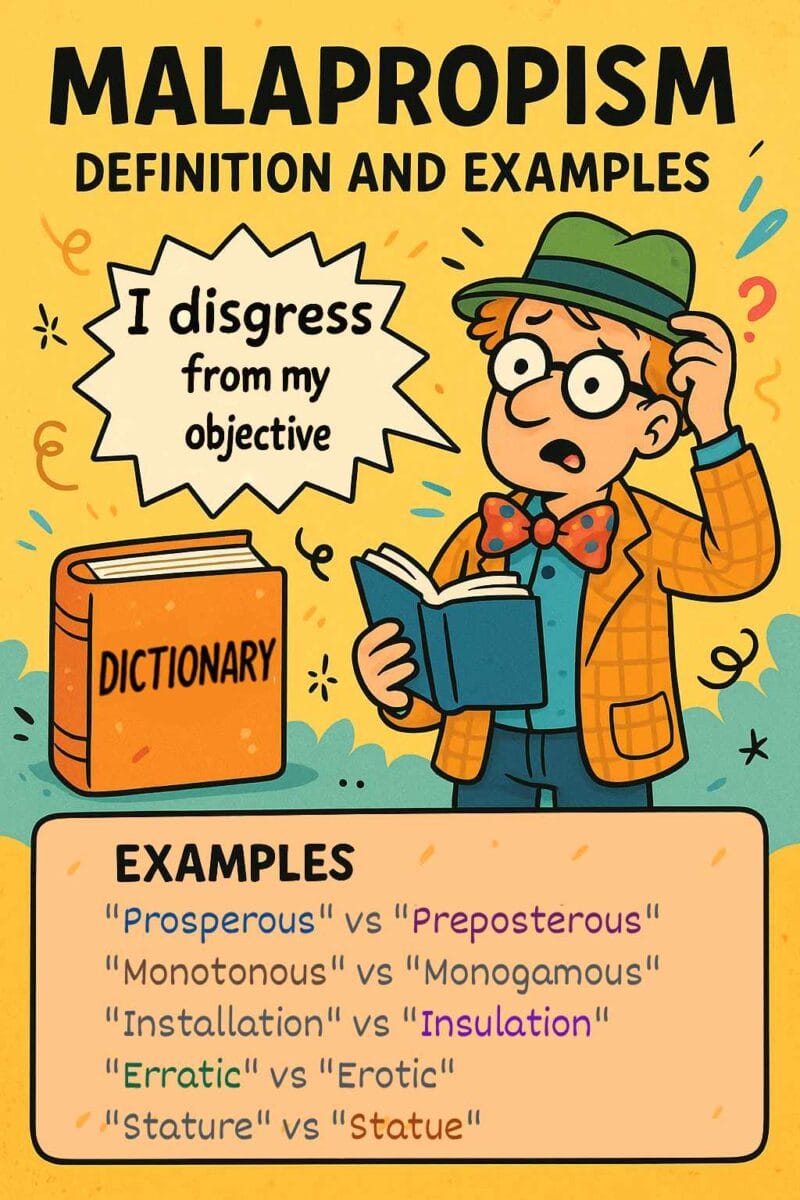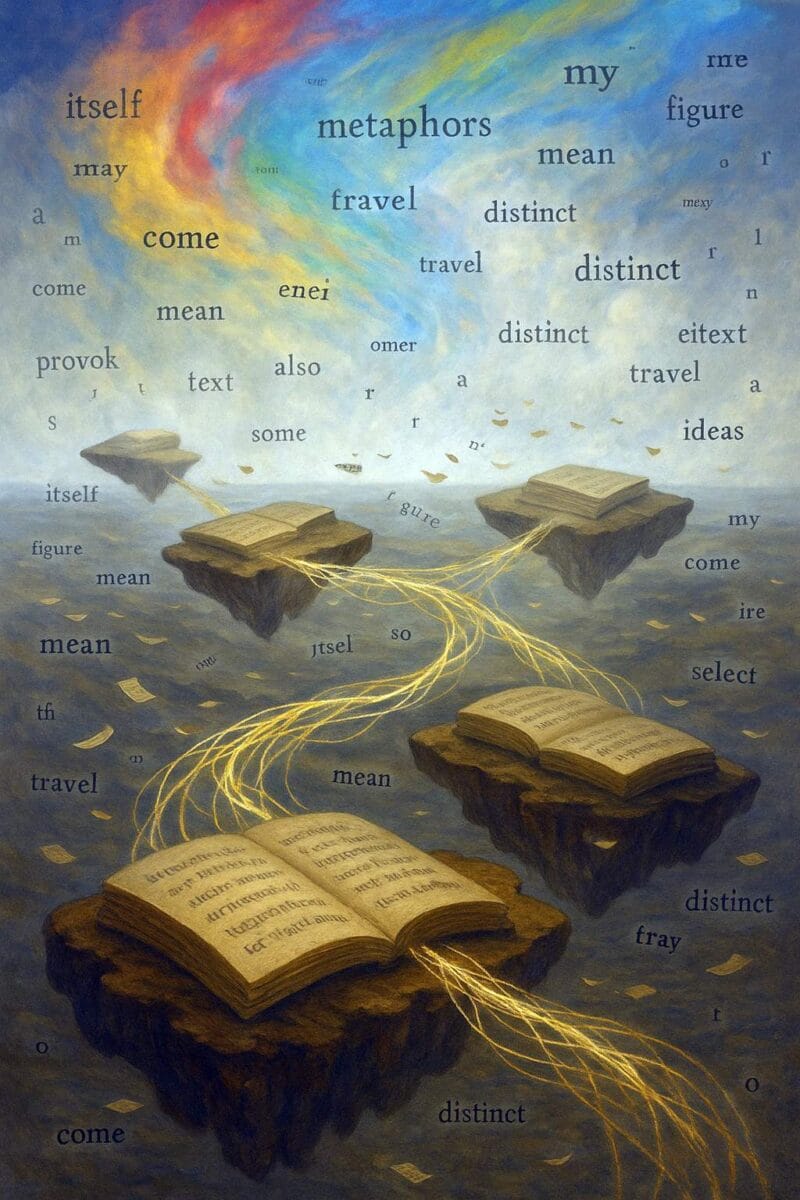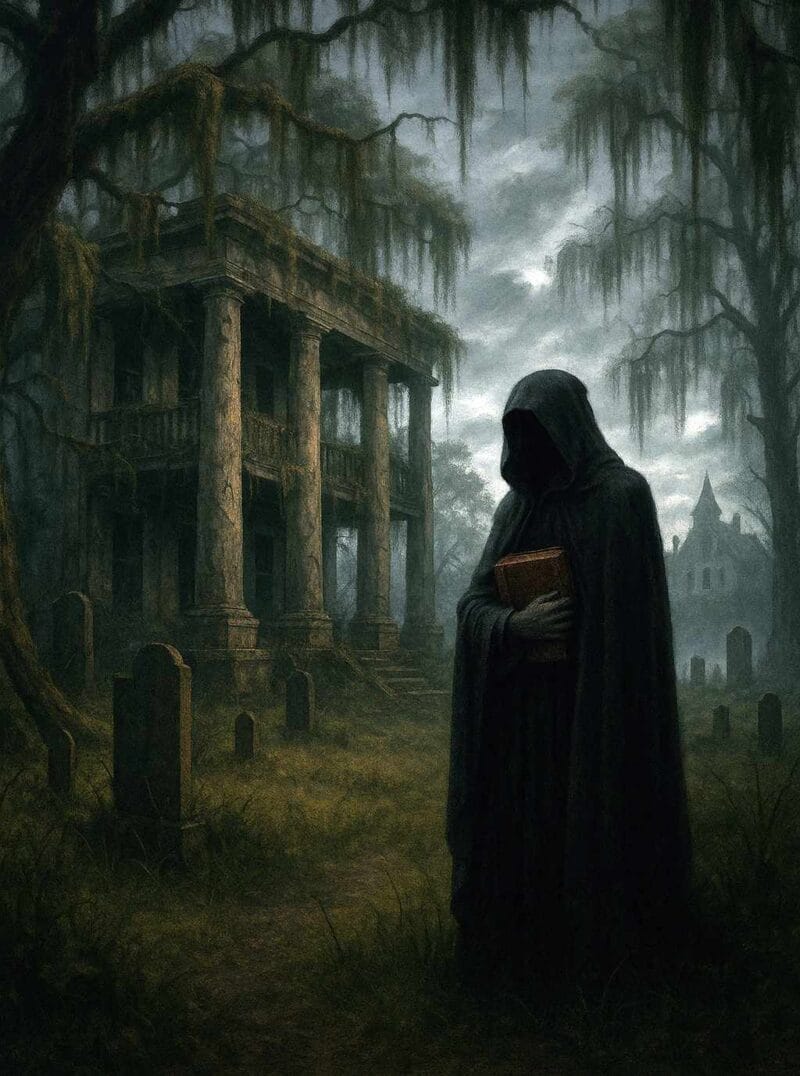In literature, stories often turn on a moment of crisis, a point when all seems lost, yet something unforeseen transforms despair into renewal. J. R. R. Tolkien gave this movement its defining name: “eucatastrophe.” To him, it was the sudden, joyous reversal that restores hope without denying the gravity of what preceded it. Its shadowed counterpart, “dyscatastrophe,” captures the collapse that must come first: the sorrow, peril, or ruin that prepares the ground for deliverance.
Together, these two terms describe a rhythm as old as storytelling—descent and restoration, anguish and grace. From myth and tragedy to modern fantasy, this sequence of downfall and reversal reveals how catastrophe can contain the seed of renewal, how despair can pivot toward light. To explore eucatastrophe and dyscatastrophe is to trace how writers shape emotional extremes into arcs of destruction and restoration.
Eucatastrophe: a joyous reversal in fiction
J. R. R. Tolkien coined the term in his essay “On Fairy-Stories” (1947), describing it as “the sudden joyous turn” that transforms despair into joy. The term joins the Greek eu (good) with catastrophe (downturn or ruin), suggesting a “good catastrophe.” It is not a mere happy ending but a turn so unexpected and complete that it feels like grace emerging from disaster.
Tolkien insisted that this reversal must arise from the story’s inner structure, never through arbitrary intervention. In his view, the fairy-story reaches its true fulfillment only when the shadow of defeat gives way to unexpected hope.
The function of “miraculous grace”
Tolkien describes the eucatastrophic moment as offering “a catch of the breath, a beat and lifting of the heart, near to (or indeed accompanied by) tears, as keen as that given by any form of literary art”—a glimpse of something transcendent. He aligns it with his Christian worldview: the Incarnation is the eucatastrophe of human history, the Resurrection the eucatastrophe of the Incarnation.
Dyscatastrophe: the dark precursor
Before any eucatastrophe can occur, there must first be the dyscatastrophe, or the potential or onset of disaster. Tolkien uses this word for the sorrow, peril, or failure that establishes the emotional depth from which joy later ascends. Without it, the final turn would feel unearned.
Again, in “On Fairy-Stories,” Tolkien writes that eucatastrophe “does not deny the existence of dyscatastrophe, of sorrow and failure: the possibility of these is necessary to the joy of deliverance.” The dyscatastrophe is therefore not a separate ending but a necessary prelude to redemption.
Eucatastrophe and Dyscatastrophe: How They Interrelate
Eucatastrophe depends entirely on the preceding dyscatastrophe. The descent into loss intensifies the power of recovery. The closer the story moves toward what seems irredeemable ruin, the more luminous its reversal becomes. Tolkien designed this pattern deliberately: despair gives the subsequent turn its emotional and spiritual magnitude.
In The Lord of the Rings (1954), Frodo’s surrender to the Ring at Mount Doom marks the full descent into dyscatastrophe. Gollum’s sudden fall into the fire constitutes the eucatastrophe, the unforeseen deliverance shaped by prior choices, including Bilbo’s act of mercy.
Examples of Eucatastrophe (and Latent Dyscatastrophe)
The Lord of the Rings
As already mentioned, perhaps the most cited example: at Mount Doom, Frodo succumbs to the Ring, but Gollum’s intervention—snatching the Ring and falling into the fiery chasm—destroys it without Frodo’s intent. That turn emerges from prior plot threads: Bilbo’s earlier mercy, Gollum’s obsession, the burden borne by Frodo. Tolkien also stages a seemingly hopeless moment just before: Frodo’s failure, the enemy’s alarm, the overwhelming dominance of Sauron.
Another eucatastrophic moment arises when the black sails of the Corsair fleet, expected to seal Gondor’s doom, are revealed to be carrying Aragorn and his reinforcements, who had seized the ships by commanding the Army of the Dead.
Other Literary or Cultural Examples
In The Hobbit (1937), the rescue by the Eagles when Bilbo and the dwarves are trapped in Mirkwood is often cited as eucatastrophic, although critics debate whether it borders on deus ex machina. In C. S. Lewis’s The Lion, the Witch and the Wardrobe (1950), Aslan’s self-sacrifice and subsequent resurrection serve as a joyous reversal after the apparent defeat of Edmund.
But not every happy ending qualifies: a simple “they lived happily ever after” is not a eucatastrophe unless it arises out of approaching ruin. Tolkien warns that the happy ending alone is weaker; the sudden turn must come from peril.
Challenges, Misunderstandings, and Critical Attention
- Eucatastrophe vs. Deus ex Machina: Because eucatastrophe resolves dramatic tension suddenly, some readers confuse it with deus ex machina. But Tolkien and critics note the difference: deus ex machina intrudes from outside the story’s logic, whereas eucatastrophe is foreshadowed and coherent with the internal narrative economy.
- Overuse, abuse, or predictability: When a narrative relies on “miraculous” turns too often or without building sufficient jeopardy, the effect dilutes. Critics caution that eucatastrophic effects lose power if repeated or anticipated.
- Lesser attention to dyscatastrophe: The term dyscatastrophe remains underexplored in literary criticism. Tolkien mentions it only briefly; many commentators focus almost exclusively on eucatastrophe. Some argue that a more developed theory of dyscatastrophe could help read darker narratives (e.g., tragedy, dystopia) through a Tolkien-inspired lens.
- Applicability beyond fantasy: Though Tolkien coined the term with fairy-stories in mind, scholars sometimes apply eucatastrophe to other genres—especially narratives with redemptive or reversal arcs (e.g., religious, political, or speculative fiction). But this extension requires care: the text must support a sudden reversal that feels unexpected yet coherent.
Further Reading
Dyscatastrophe and Eucatastrophe in Tolkien’s Greatest Love Story, ‘Beren and Luthien’ by The Middle Page
Would Lord of the Rings Be More Satisfying With a Different Ending? by Slate
Why is the term “eucatastophe” used way more than the term “dycatastophe”? on Reddit




